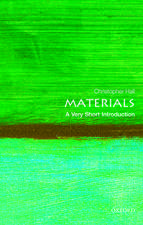Adhesion Problems in the Recycling of Concrete: Nato Conference Series, cartea 4
Editat de Pieter C. Kreijgeren Limba Engleză Paperback – 25 noi 2012
Din seria Nato Conference Series
- 5%
 Preț: 389.56 lei
Preț: 389.56 lei - 15%
 Preț: 705.99 lei
Preț: 705.99 lei - 15%
 Preț: 661.32 lei
Preț: 661.32 lei -
 Preț: 389.49 lei
Preț: 389.49 lei -
 Preț: 412.95 lei
Preț: 412.95 lei - 18%
 Preț: 1241.42 lei
Preț: 1241.42 lei -
 Preț: 389.70 lei
Preț: 389.70 lei -
 Preț: 409.69 lei
Preț: 409.69 lei - 20%
 Preț: 585.72 lei
Preț: 585.72 lei -
 Preț: 412.57 lei
Preț: 412.57 lei -
 Preț: 396.78 lei
Preț: 396.78 lei -
 Preț: 399.12 lei
Preț: 399.12 lei -
 Preț: 415.29 lei
Preț: 415.29 lei -
 Preț: 397.97 lei
Preț: 397.97 lei -
 Preț: 396.62 lei
Preț: 396.62 lei -
 Preț: 390.08 lei
Preț: 390.08 lei - 5%
 Preț: 378.07 lei
Preț: 378.07 lei - 18%
 Preț: 1235.57 lei
Preț: 1235.57 lei - 15%
 Preț: 495.26 lei
Preț: 495.26 lei -
 Preț: 392.37 lei
Preț: 392.37 lei -
 Preț: 413.15 lei
Preț: 413.15 lei -
 Preț: 404.67 lei
Preț: 404.67 lei -
 Preț: 396.40 lei
Preț: 396.40 lei - 15%
 Preț: 662.16 lei
Preț: 662.16 lei - 5%
 Preț: 722.69 lei
Preț: 722.69 lei - 15%
 Preț: 666.41 lei
Preț: 666.41 lei -
 Preț: 382.75 lei
Preț: 382.75 lei - 18%
 Preț: 822.01 lei
Preț: 822.01 lei -
 Preț: 401.57 lei
Preț: 401.57 lei -
 Preț: 403.91 lei
Preț: 403.91 lei -
 Preț: 404.67 lei
Preț: 404.67 lei -
 Preț: 403.15 lei
Preț: 403.15 lei -
 Preț: 411.42 lei
Preț: 411.42 lei -
 Preț: 440.71 lei
Preț: 440.71 lei -
 Preț: 408.63 lei
Preț: 408.63 lei - 15%
 Preț: 647.27 lei
Preț: 647.27 lei -
 Preț: 393.74 lei
Preț: 393.74 lei -
 Preț: 392.97 lei
Preț: 392.97 lei - 18%
 Preț: 1234.62 lei
Preț: 1234.62 lei -
 Preț: 412.95 lei
Preț: 412.95 lei -
 Preț: 390.46 lei
Preț: 390.46 lei -
 Preț: 405.66 lei
Preț: 405.66 lei - 15%
 Preț: 667.54 lei
Preț: 667.54 lei - 18%
 Preț: 1242.03 lei
Preț: 1242.03 lei - 18%
 Preț: 1225.62 lei
Preț: 1225.62 lei - 15%
 Preț: 679.00 lei
Preț: 679.00 lei -
 Preț: 401.03 lei
Preț: 401.03 lei -
 Preț: 399.12 lei
Preț: 399.12 lei -
 Preț: 413.15 lei
Preț: 413.15 lei
Preț: 399.67 lei
Nou
Puncte Express: 600
Preț estimativ în valută:
76.50€ • 79.56$ • 64.10£
76.50€ • 79.56$ • 64.10£
Carte tipărită la comandă
Livrare economică 13-27 martie
Preluare comenzi: 021 569.72.76
Specificații
ISBN-13: 9781461583141
ISBN-10: 1461583144
Pagini: 436
Ilustrații: XII, 420 p. 20 illus.
Greutate: 0.69 kg
Ediția:1981
Editura: Springer Us
Colecția Springer
Seriile Nato Conference Series, VI Materials Science
Locul publicării:New York, NY, United States
ISBN-10: 1461583144
Pagini: 436
Ilustrații: XII, 420 p. 20 illus.
Greutate: 0.69 kg
Ediția:1981
Editura: Springer Us
Colecția Springer
Seriile Nato Conference Series, VI Materials Science
Locul publicării:New York, NY, United States
Public țintă
ResearchCuprins
1 Organization.- 1 Introduction.- 2 Program.- 3 Participants.- 4 Proceedings.- 2 Lectures, Discussions, and General Discussion.- 1.1 Introduction and stating the problems.- 1.2 Additional information given during the presentation: Case study of the Netherlands.- 2.1 The structure of concrete: a macroscopic view.- 2.2 Discussion.- 3.1 Principles of adhesion — bonding in cement and concrete.- 3.2 Discussion.- 4.1 Contamination problems in the recycling of concrete.- 4.2 Discussion.- 5.1 Fracture energy of concrete.- 5.2 Discussion.- 6.1 Adsorption sensitive fracture and fragmentation.- 6.2 Discussion.- 7.1 Economics of concrete recycling in the United States.- 7.2 Discussion.- 8. General Discussion.- 3 Introductory Lectures to Workshops, Minutes of Workshops, Workshop Reports, and Contributions to Workshops.- 1. Workshop 1 — Fragmentation of plain and reinforced concrete.- 1.1 Minutes of workshop 1.- 1.2 Contributions.- 1.2.1 Demolition techniques for concrete structures.- 1.2.2 Observed energy — dissipative features of crack propagation in mortar.- 2. Workshop 4 — Fragmentation of prestressed concrete.- 2.1 Introductory lecture: Demolition of prestressed concrete structures.- 2.2 Minutes of workshop 4.- 2.3 Contributions.- 2.3.1 Explosives for localized cutting in concrete.- 3. Workshop 5 — Contamination effects on fragmentation, fibre and polymer concrete.- 3.1 Introductory lecture: Materials characterization for fragmentation.- 3.2 Report on workshop 5.- 3.3 Contributions.- 3.3.1 Correlation between fracture toughness and zeta potential of cementstone.- 4. Workshop 8 — Fragmentation of all types of concrete — research needs.- 4.1 Minutes of workshop 8.- 4.2 Contributions.- 4.2.1 Recommended flow chart for future research activities concerning demolitionand fragmentation of concrete.- 5. Workshop 2 — Recycling of concrete (aggregates for use in concrete).- 5.1 Introductory lecture: Crushed concrete as concrete aggregate.- 5.2.1 Minutes of workshop 2.- 5.2.2 Report on workshop 2.- 5.3 Contributions.- 5.3.1 Classification of recycled aggregate, proposed in the Netherlands.- 5.3.2 Fragmentation and recycling of reinforced concrete, some research results.- 5.3.3 The role of a polymeric interlayer in improving mechanical characteristics of recycled concrete.- 6. Workshop 3 — Re-use of concrete (other than as aggregate).- 6.1 Introductory lecture: Recycling of concrete into new applications.- 6.2.1 Minutes of the presentation of the introductory lecture.- 6.2.2 Report on workshop 3.- 6.3 Contributions.- 6.3.1 Example of re-use of concrete in France.- 6.3.2 Reflecting properties of a road surface.- 7. Workshop 7 — Contamination effects on recycling and re-use.- 7.1 Introductory comments.- 7.2.1 Minutes of workshop 7.- 7.2.2 Report on workshop 7.- 7.3 Contributions.- 7.3.1 The effect of gypsum on length change and strength of portland- and portland blastfurnace cementstone specimen.- 7.3.2 The influence of contaminants on the quality and the behaviour of recycled concrete.- 8. Workshop 8 — Future demolition-friendly materials.- 8.1 Introductory comments.- 8.2 Minutes of workshop 6.- 8.3 Contributions.- 8.3.1 Some notes regarding the performance of waste materials and concrete in building components.- 4 Concluding Remarks.- Concluding remarks.- List of Participants.












